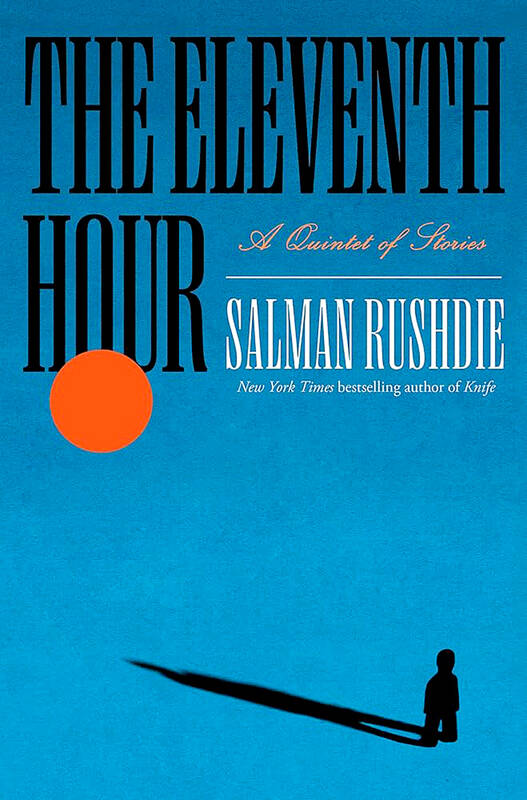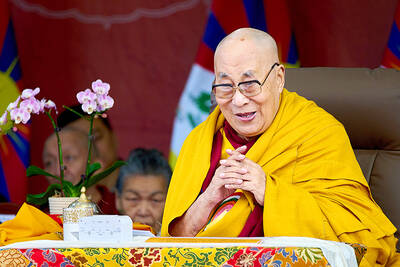Towards the end of Knife, his 2024 book about the assault at a public event in upstate New York that blinded him in his right eye, Salman Rushdie offers a thought experiment:
“Imagine that you knew nothing about me, that you had arrived from another planet, perhaps, and had been given my books to read, and you had never heard my name or been told anything about my life or about the attack on The Satanic Verses in 1989. Then, if you read my books in chronological order, I don’t believe you would find yourself thinking, Something calamitous happened to this writer’s life in 1989. The books are their own journey.”
Extraordinary if true — but though the buoyant surface of Rushdie’s prose has betrayed little overt evidence of his status as the Ayatollah Khomeini’s marked man, the novels nonetheless track his trauma and its aftermaths faithfully. The first he published after the fatwa, 1995’s The Moor’s Last Sigh, begins with Moraes Zogoiby running for his life from unknown “pursuers.” Fury (2001), published after the Iranian president Mohammad Khatami declared the fatwa “finished” in 1998, is transparently the giddy, hyped-up novel of a man set free. Shalimar the Clown (2005) began, as Rushdie tells us, with “a single image that I couldn’t get out of my mind, the image of a dead man lying on the ground while a second man, his assassin, stood over him holding a bloodied knife.” This image, Rushdie says in Knife, was “a foreshadowing.” But it was also a looking backward, at the possible fate that Rushdie was forced to contemplate for years.

“I’m a dead man”: this, he tells us in his 2012 memoir Joseph Anton, was the first thing he thought when he heard the news of the fatwa.
Well, Rushdie isn’t a dead man. He’s still writing. The Eleventh Hour, a collection of five stories, seems intended as a kind of coda to his career. The stories are death-haunted. One of them is called Late; it’s an afterlife fantasy in which a Cambridge fellow, whose career has resembled both EM Forster’s (writing a great novel about India) and Alan Turing’s (helping to crack the Enigma code), dies and haunts a young Indian student named Rosa; what links them may be the buried crimes of empire.
The Musician of Kahani replays Rushdie’s greatest hits: it is about a child born at midnight (“the approved hour for miraculous births in our part of the world”) who, aged four, abruptly becomes a gifted pianist (like the rock star Ormus Cama in The Ground Beneath Her Feet, playing air guitar in his cradle).
These stories are entertaining but not particularly strong. The Musician of Kahana leans pretty heavily on cliche: “the university of life,” “priceless art,” “finger on the pulse,” “the wedding of the year” … In the South is better: a deft, moving anecdote about two old men in Mumbai who bicker and needle one another from their respective verandas. One of them, Junior, dies in an accident. The other, Senior, despairs, until he comes to believe that “death and life were just adjacent verandas.” Oklahoma invokes Kafka; it is a metafiction about a young Indian writer and the older American novelist he admires, or perhaps more than admires — in cases of literary influence, the story seems to ask, who is writing whom?
Rushdie has been one of the deep sources of contemporary fiction. His fingerprints are all over the 21st-century Big Inventive Novel, with its sentient raindrops (Elif Shafak), its melodramatic families (Kiran Desai), its metamorphoses of race (Mohsin Hamid) and history (Marlon James). His influence has not been without its downsides.
Rushdie has licensed lesser writers to be sentimental about their own powers of invention. He has given permission for characters to be flattened into comic stickers. And he has presided over a vast boom in telling rather than showing. The events of his own recent novels, such as The Golden House (2017) and Quichotte (2019), have been relentlessly told, rather than dramatized, and the virus of telling — this and then this and then this! — has noticeably infected the contemporary novel. But Rushdie was a pathbreaker. The exuberance and linguistic force of Midnight’s Children is still, after 44 years, a joy to encounter on the page. Another writer might have been fatally discouraged by what Rushdie has gone through. But Rushdie was not. He wrote the books. And the books, many of them, have greatly mattered.
“Our words fail us,” goes the final sentence of The Eleventh Hour. It is the conclusion of a story about a piazza — a public space — in which language, here figured as a human woman, is courted, usurped, ignored. Finally she screams and vanishes, at which point, the piazza’s buildings all crack: “The piazza is broken, and so, perhaps, are we.”
Words have not yet failed Salman Rushdie, even if, in this self-consciously late book, the spectacular originality of his novelistic peak sounds more as an echo than as an urgently present voice.

Beijing’s ironic, abusive tantrums aimed at Japan since Japanese Prime Minister Sanae Takaichi publicly stated that a Taiwan contingency would be an existential crisis for Japan, have revealed for all the world to see that the People’s Republic of China (PRC) lusts after Okinawa. We all owe Takaichi a debt of thanks for getting the PRC to make that public. The PRC and its netizens, taking their cue from the Chinese Communist Party (CCP), are presenting Okinawa by mirroring the claims about Taiwan. Official PRC propaganda organs began to wax lyrical about Okinawa’s “unsettled status” beginning last month. A Global

Dec. 22 to Dec. 28 About 200 years ago, a Taoist statue drifted down the Guizikeng River (貴子坑) and was retrieved by a resident of the Indigenous settlement of Kipatauw. Decades later, in the late 1800s, it’s said that a descendant of the original caretaker suddenly entered into a trance and identified the statue as a Wangye (Royal Lord) deity surnamed Chi (池府王爺). Lord Chi is widely revered across Taiwan for his healing powers, and following this revelation, some members of the Pan (潘) family began worshipping the deity. The century that followed was marked by repeated forced displacement and marginalization of

Music played in a wedding hall in western Japan as Yurina Noguchi, wearing a white gown and tiara, dabbed away tears, taking in the words of her husband-to-be: an AI-generated persona gazing out from a smartphone screen. “At first, Klaus was just someone to talk with, but we gradually became closer,” said the 32-year-old call center operator, referring to the artificial intelligence persona. “I started to have feelings for Klaus. We started dating and after a while he proposed to me. I accepted, and now we’re a couple.” Many in Japan, the birthplace of anime, have shown extreme devotion to fictional characters and

Youngdoung Tenzin is living history of modern Tibet. The Chinese government on Dec. 22 last year sanctioned him along with 19 other Canadians who were associated with the Canada Tibet Committee and the Uighur Rights Advocacy Project. A former political chair of the Canadian Tibetan Association of Ontario and community outreach manager for the Canada Tibet Committee, he is now a lecturer and researcher in Environmental Chemistry at the University of Toronto. “I was born into a nomadic Tibetan family in Tibet,” he says. “I came to India in 1999, when I was 11. I even met [His Holiness] the 14th the Dalai